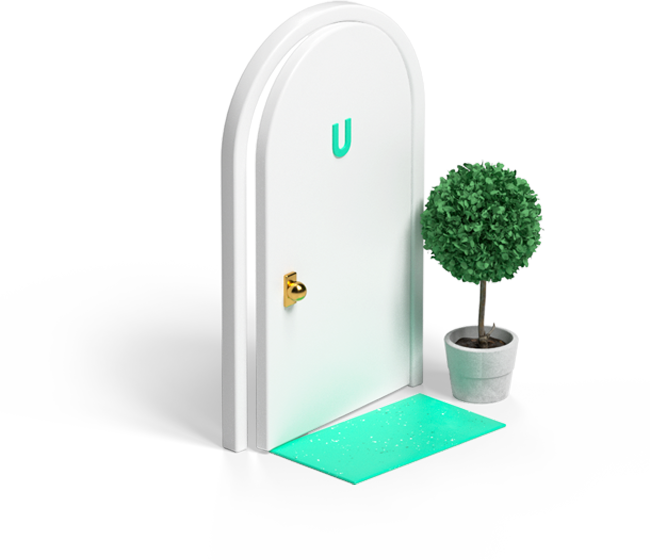5 Ways Technology Can Help Buy-to-Let Landlords
Technology continues to revolutionise the property sector, with buy-to-let landlords now having access to AI-powered platforms, smart home integration, and predictive analytics. These innovations save time, reduce costs, and improve tenant satisfaction.
By Jon Howe6/10/20

Proptech is the latest buzzword that seeks to pull lots of ideas, projects and innovations under an umbrella aimed at identifying uses for technology in the property sector. There are many offshoots of property that can be affected by proptech; investment, property management and conveyancing for example, but also the area of buy-to-let landlords.
The property sector has been largely resistant to change in terms of technology in recent years, with websites for estate agents seemingly a glass ceiling. After all, you have to physically see a property, meet banks and sign legal papers. Or do you? Well some of these are a long way from being automated, but technology is advancing to bring radical change to the property sector.
Technology is being fine-tuned and little details of processes and operations are coming under the scope of advancing technology, and we are finding that more and more elements of the property process can be aided by technology, and indeed, technology is being designed and tailored specifically for the property industry.
It is true that 3D technology and virtual reality (360˚) video is expanding rapidly at the moment, and this is one area that can help buy-to-let landlords, in terms of considering investments online and then allowing people to view a property online. These are the more obvious uses of emerging technologies, but overall it is clear that being a buy-to-let landlord, particularly if you have multiple properties, or have designs to, can become a full-time job. While some elements of it can easily run out of control – such as collecting and chasing rent, energy management, safety and security and managing viewings – it is these periphery but critical tasks that technology is looking to help with.
So let’s look at the five most useful technology aids for buy-to-let landlords and assess how they can make life easier:
1. Smart locks
Lost your keys? Soon it won’t matter. A well-connected 21st century landlord will soon be able to control access to the property through a smartphone, and of course this ease of security will pass onto the tenants also.
The best smart locks currently available vary in terms of what they allow you to do, and certainly you can choose a product that suits what you are comfortable leaving in the hands of technology. You can use phones to open and close doors, assign certain privileges to certain people, ie. tenants or maintenance personnel, and you can use voice activation to authorise certain actions. Some packages can also be hooked up to CCTV, so that you can see who is at your property and decide yourself whether to allow access.
In terms of security, this also offers the possibility to be alerted when someone approaches the property after a certain time of day, or any time when nobody is there. The possibilities are endless, and it really depends on how much physical control you want to retain and how much this technology will help you when you are trying to manage a portfolio of properties.
Some packages have built-in Wi-Fi while some rely on Bluetooth connectivity, and hence you have to be within a certain range to be able to communicate with it. Another useful feature is ‘geofencing’, whereby you can set up a perimeter distance around your property and use smartphone location technology to pinpoint a person’s location. Therefore when that person or persons leave the perimeter distance, the lock on the property automatically engages, and hence you never need to worry about absent-minded tenants not locking the door. Similarly, an auto-lock feature can engage the lock if it has been unlocked for a specific time. Notifications can also tell you who is coming and going in real time if you have certain security concerns. And you can also integrate other smart technologies from around the property, such as CO2 or smoke detectors, fire alarms or simply Google Assistant.
Of course these packages are more expensive than a traditional lock and key, but balancing cost against the help it offers you is the deciding factor.
2. Smart Energy
Smart energy management can start without technology, but technology brings greater benefits. For example, it is common sense to have an efficient, well-maintained boiler that runs cost-effectively. It is common sense to manage heating and hot water sensibly in the winter and to not leave electrical devices on 24/7, which can all be done manually, but technology makes it easier and offers us better information upon which to base decisions.
Tenants are generally impressed if a property is well-managed from a carbon footprint point of view, and so it will help the marketability of the property if it has a good EPC rating, increase its value if you are looking to sell and will also offer an improvement on your monthly rental yield through the energy costs you save. You might even find that some tenants are happy to spend a little more on rent if the EPC rating of a property is good.
Smart meters are common in many homes now and are useful for seeing where you are spending most money and how you can adapt your practices to save money. In rented accommodation it is useful for all tenants to see this information in a visual representation. And of course smart meters give real time readings and mean your bills are not derived from estimated usage.
An extension to this are smart heating controls, as they allow you to control your thermostat remotely using your phone. This allows the user to turn the heating on and off, control the temperature, set heating preferences based on routines the system has stored in its memory, and turn the heating off in certain rooms if they are unoccupied. A smart heating control allows you to manage the property better and control usage to save money, for example, by turning the heating off if you are unexpectedly going to be home late or staying away overnight. And again, these systems also store real time data to allow you to monitor usage and make informed decisions.
Other ways technology can help with energy usage is with smart light bulbs and smart plugs, which allow you to control electricity usage remotely or set timers to reduce wasteful practices.
3. Manage maintenance
One of the most time-consuming aspects of being a buy-to-let landlord is managing maintenance. Just taking calls, working out what the problem is, contacting a contractor or sorting the problem yourself, it all takes time up and wastes big chunks of your day. Technology now exists to help you with this in terms of identifying problems, finding someone to sort it and then actually completing the task. But even before you are alerted to the problem, the software helps the tenant address the problem themselves. Often the problem is quite easy to solve, so a portal located in the property attempts to instruct and advise the tenants to address relatively simple issues without bothering you. If an investment in this technology saves you being called out four or five times a year, in each of your properties, then it could easily save you a lot of stress, time and cost.
FixFlo is a popular property maintenance platform which helps tenants fix problems with fire, gas, alarms, plumbing, doors and locks and heating. It communicates help, creates detailed reports for contractors to help deal with the problem much quicker and allows tenants to make maintenance requests for non-emergency issues, instead of phoning you at inconvenient times. Tenants often forget that they, usually, have contracted responsibilities for the upkeep of the property, and so systems such as FixFlo help remind them of that and prevent the easy fix of contacting the landlord at every opportunity. It also creates improved asset protection for the property, and hence at least maintaining the value of the property, if not increasing it.
4. Virtual reality (VR) walkthroughs
The last three years has seen VR develop from a short film you had to watch through a hand-held cardboard device to something that is revolutionising many different industries. You may think VR is just used for gaming or to watch cool You Tube videos of space or the Champions League Final, but it is becoming a technology that buy-to-let landlords can use to help with 100% occupancy of properties.
VR technology allows you to make a 360˚ video and is no longer a clunky process. Sites such as EyeSpy 360 can help you make a VR video in minutes, but essentially this can make the property viewing process even better than a physical viewing. Not only can it be done 24/7 and from the comfort of someone’s home, but the prospective tenant can spend as long as they want in the property and can take their time to feel if the property is right, rather than feeling rushed into making a decision later based on an uncomfortable five minute viewing.
The buy-to-let market is a very tough one, particularly in cities such as Leeds, with such an established student area and a large student population. So VR walkthroughs can help your property stand out from the crowd. It offers more visually than usual estate agent photos and means that any resulting viewing is more likely to end in a tenancy agreement, thus saving a lot of time for the landlord. Many VR videos also have a facility to ask and answer questions, so that area of the typical viewing can be covered too.
5. Property management
For many years buy-to-let landlords have had the option of managing a property themselves or signing off the duties to a letting agent or a property management company. They take all the responsibility for a fee, while you sit back and take the rental income. Now there is an option that is somewhere in between those two extremes. NoAgent is a property management platform that acts as an online ‘one stop shop’ for all your property management needs, and essentially allows you to manage between one and three properties and keep all your information in one place, while also seeking advice. All for a set monthly fee.
There is no fee to pay until tenants are in the property, but after that you get a fully managed property service with experienced account managers, 24/7 support over maintenance issues and real time access to information and legal help. The technology can organise the tenant-finding process and pre-filter suitable people, while also collecting rent and offering a portal for you to see who or what is owed.
An important factor with this particular property management software, is that while many tasks are done for you, you retain authority and can manage what happens and maintain transparency through one central screen for each property, allowing you full visibility and control, but with a huge reduction in everyday tasks.
Conclusion
This last line effectively sums up the area of technology for buy-to-let landlords. There are many ways you can help yourself via proptech, it really depends which aspects cause you the most headaches and where you most want to create more time for yourself. Certainly it is clear that through some smart investment, being a buy-to-let landlord can ultimately become more lucrative and a lot less hassle through technology.
Take a look at our other articles




